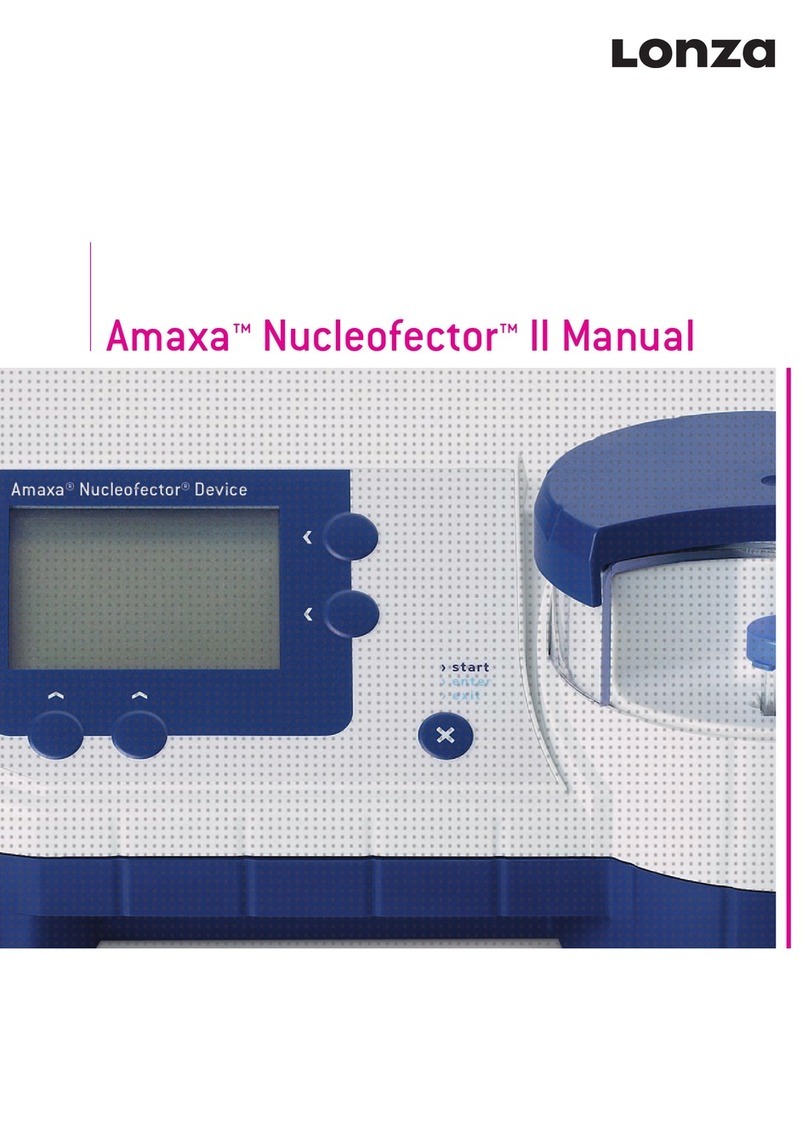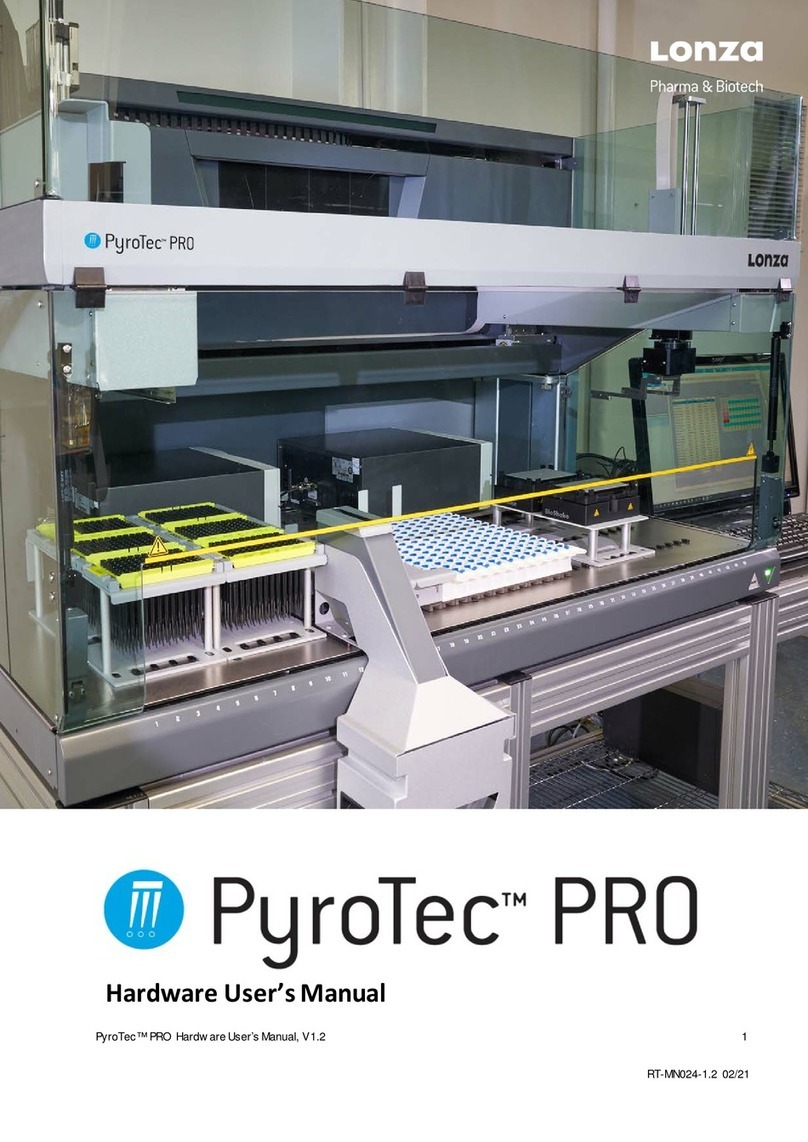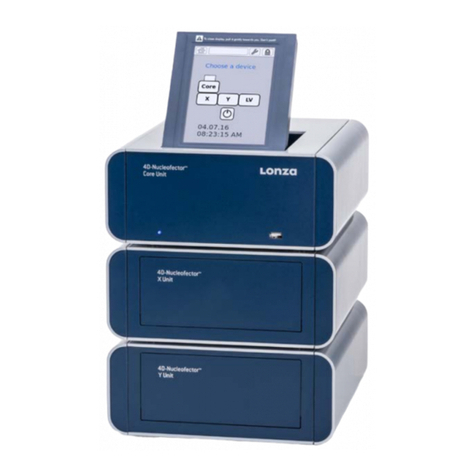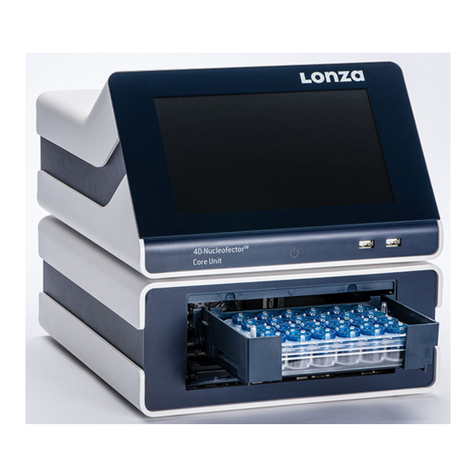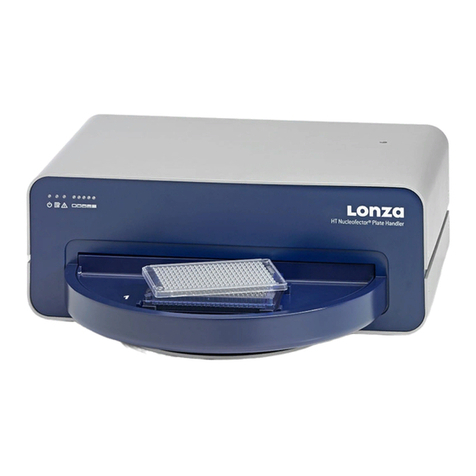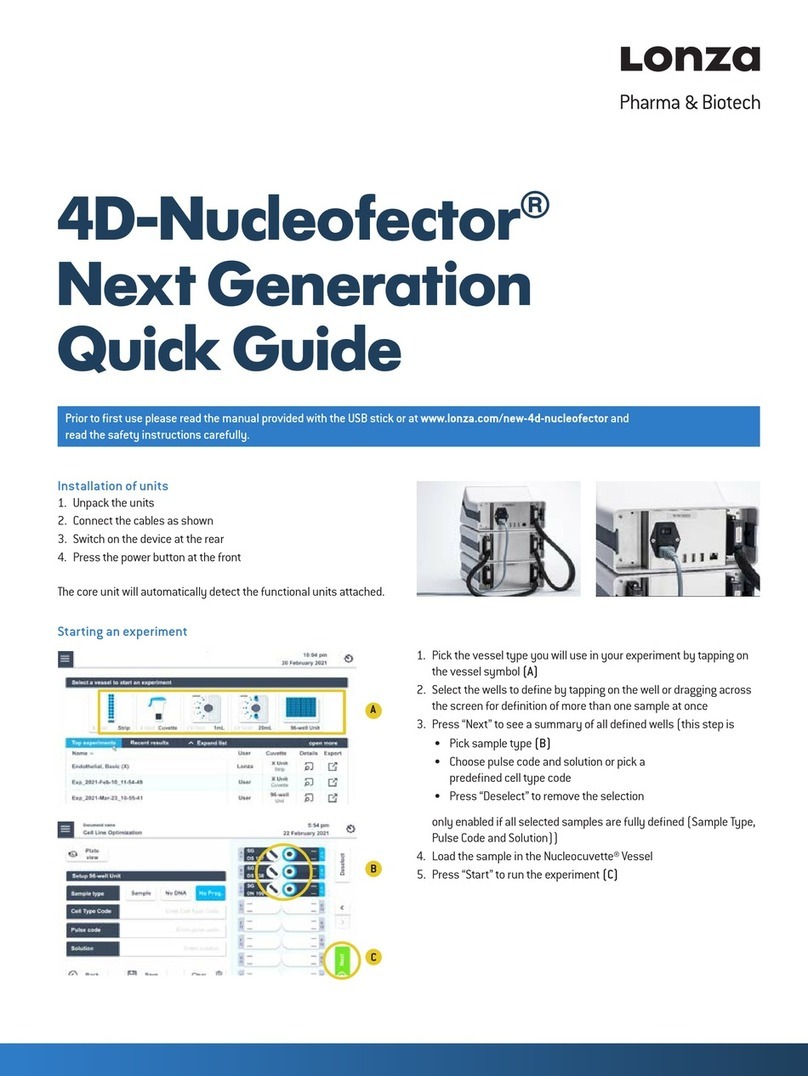
5
6. Close doors and re-latch by pressing down on the
white latches. If running one blot, slide blank
adapter plate into the side without the blotting
cassette.
4.2 Electro-Blotting Procedure
1. Place stirring bar in bottom of reservoir in stirring
corral. Place core/blotting cassette assembly into
lower reservoir. The anode (red) and cathode (black)
electrodes are color-coded on both the core/cassette
assembly and lower reservoir. Ensure the red dot on
the cassette assembly is on the same side as the
red receptacle on the lower reservoir.
2. Pour 1 liter of freshly prepared, chilled (4º) Towbin
buffer into lower buffer reservoir. Buffer will percolate
into central core.
3. Attach safety cover, as shown in figure 11.
4. Connect the leads to the power supply, matching the
color-coded red to red and black to black. See
Section 5.2 for recommended power conditions.
Begin transfer by electrophoresis.
4.3 Removing the Blot
1. Turn the power supply off and disconnect the leads
from the power supply. Remove the safety cover
from the unit, by simultaneously pressing down on
the white push pins with your thumbs, while lifting up
on the yellow safety cover with your fingers. See
Figure 2. Do not remove safety cover by pulling
up on leads!
2. Blotting cassettes can be removed by leaving the
core in place and opening the top latches of the
core, opening the doors and lifting the cassettes out.
Unlatch the blotting cassettes and remove blot from
blotting sandwich.
SECTION 5
Running Conditions
5.1 Recommended Power for Slab Gels:
Precise electrophoresis conditions will vary according to
the number and type of gels used, buffer conditions
employed, power input, and the general goal of the
experiment. Refer to section 5.4 for in depth discussions
on practical and theoretical approaches to protein gel
electrophoresis.
Using standard SDS-PAGE buffer systems (see section
5.3). For two 1.0mm thick gels at room temperature use
the following conditions at constant voltage:
200 VDC for ~60 minutes, or if faster runs are
desired, 250 VDC for 30 minutes.
As the thickness of gel increases, the mA’s increase
proportionally.
At constant voltage 200-250 VDC, the proteins will
migrate at a constant rate during electrophoresis with
adequate heating appropriate for denaturing gels.
Increasing the voltage/mA (for each single gel thickness
and percentage) will speed mobility but increase the risk
of overheating.
5.2 Recommended Power for Electro-Blotting:
Using standard SDS-PAGE electro-blotting buffer
systems (see section 5.3) use the following conditions:
100 VDC @ 90 minutes.
5.3 Recommended Buffers
For Best Results use AccuGENE®Electrophoresis
Buffers (see ordering info).
5.4 References
1. Hames, B.D. (ed.) (1998). Gel Electrophoresis of
Proteins. A Practical Approach. 3rd edn. Oxford
University Press, Oxford. Ch. 1,3.
2. Sambrook, J., Fritsch, Russell, D. (2001). Molecular
Cloning. A Laboratory Manual. 3rd edn. Cold Spring
Harbor Laboratory Press, Cold Spring Harbor, New
York. A8.40-A8.55
3. Ausubel, F.M., Brent, R., Kingston, R.E., Moore,
D.D., Seidman, J.G., Smith, J.A., Struhl, K. (ed)
(1993). Current Protocols in Molecular Biology. Vol.
Protein Denaturing
Buffer: Protein Electro-Blotting Buffer:
Figure 11
TG-SDS (1X): TG-SDS Towbin (1X) 20% MeOH:
0.025M Tris base 0.025M Tris base
0.192M Glycine 0.192M Glycine
0.1% (w/v) SDS 0.05-0.1% (w/v) SDS
pH 8.3 20% (v/v) Methanol






